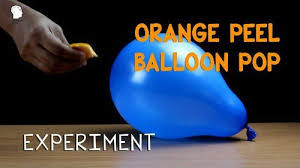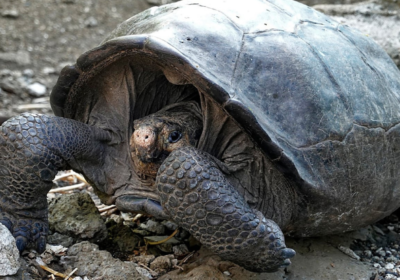Have you noticed that an orange peel can pop a balloon? Imagine that a party is going on at home. Someone peels an orange, while standing next to balloons. The balloon goes pop! Most people discover the effect of orange peel on balloons quite accidentally. A few drops of the juice squeezed out from an orange peel is sufficient to pop an inflated balloon. Let us try this orange peel balloon pop experiment, and learn the science behind.

Materials required
Balloon – 1
Orange – 1
Steps to follow
- Inflate the balloon and tie a knot at the end, so that the air will not escape.
- Peel the orange, and keep the orange peels aside.
- Bring the peel close to the balloon. Squeeze it without touching the balloon. Observe the effect of the juice on the balloon.
- As soon as the droplets of the orange peel juice fall over the balloon, it pops. The result is immediate.
What we learn
So what is so special about orange peel that it caused the balloon to pop? It is just a liquid, and has no sharp edges. Still the balloon pops. Orange peel contains a chemical called limonene, which is a hydrocarbon. Balloon is made of rubber, which also happens to be a hydrocarbon. Hydrocarbons are non-polar substances. A basic rule of chemistry states that hydrocarbons, due to their non-polar properties, mix and dissolve into each other.
When we squeezed the orange peel over the balloon, it caused some of the rubber molecules to dissolve in the limonene. As a result, the balloon surface thinned down. Air pressure inside the balloon caused it to pop. So we were able to burst an inflated balloon without even touching it.
Did you enjoy doing this simple experiment? Find lots more of such fun-to-do experiments, in our Experiments section.
Here’s Something You Might Like
As a participant in the Amazon Associates Program, Science4Kids may earn from qualifying purchases.




